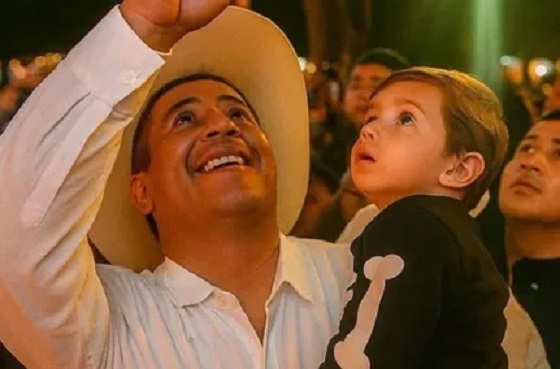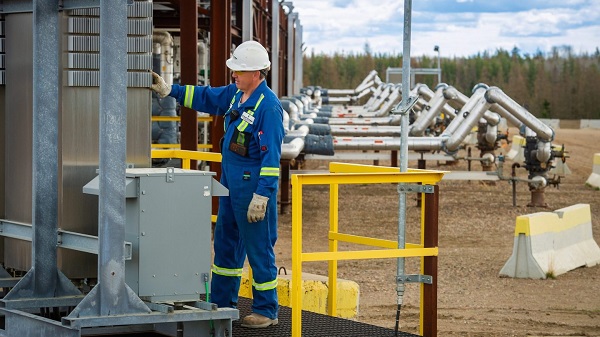Opinion
How did our population fare during this current mandate? The facts are there and the north did not fare well.

On October 16 2017 we will be electing a new council, and as it appears so far that all the incumbents are running we may be electing the old council.
The incumbents and challengers will be talking about growth and managing it. Let us look at the growth during the last mandate 2013-2017. The last census was done in 2016 and showed a decrease since 2015. (99,832 from 100,807) The decision was made to cancel the 2017 census since there was no sign of growth and you needed growth to justify the cost of the census.
Population of Red Deer in 2016 was 99,832 a increase of 2,723 or 2.8%over 97,109 in 2013. Not that great on the face of things, but looking deeper and you realize some neighbourhoods did not even fare that well.
For example;
Kentwood 2016=4,267 2013=4,280
Glendale 2016=4,288 2013=4,393
Normandeau 2016=3,530 2013=3,565
Pines 2016=1,718 2013=1,823
Highland Green 2016=3,920 2013=3,979
Oriole Park 2016=5,244 2013=5,308
Riverside Meadows 2016=3,686 2013=3,665
Fairview 2016=710 2013=770
Johnstone Park 2016=3,865 2013=3760
Total 2016=31,228 2013=31,543
Percentage of population 2016=31.3% 2013= 32.5%
Red Deer City Population 2016=99,832 2013=97,109
In case you did not know these are the neighbourhoods north of the river. So while the city grew for 3 of 4 years in the end it still barely grew over 4 years ago. The city shrank in total from 100,807 in 2015 to 99,832 in 2016. These neighbourhoods, except for Johnstone Park which grew by 105 and Riverside Meadows which grew by 21, shrank in size over the four year mandate.
So I ask the incumbents to offer measures to stem the outward migration and encourage growth. Anyone? Perhaps build a north side Collicutt Centre? A high school?
The facts are there on reddeer.ca for anyone to study.
International
BBC uses ‘neutrality’ excuse to rebuke newscaster who objected to gender ideology

From LifeSiteNews
Rebuking a female presenter for correcting an ideological script that says men can get pregnant isn’t ‘neutrality,’ by any stretch.
Imagine a society in which the state broadcaster demanded that the female hosts eliminate the word “women” in favor of “people” and rebuked them if their facial expressions betrayed any hit of protest on air.
Welcome to the United Kingdom in 2025. According to the BBC: “Martine Croxall broke rules over ‘pregnant people’ facial expression, BBC says.”
Martine Croxall, a BBC presenter, was introducing an interview about “research on groups most at risk during UK heatwaves,” and the teleprompter script she was reading live on BBC News Channel contained the phrase “pregnant people.”
Croxall visibly raised her eyebrows, and corrected in real-time: “Malcolm Mistry, who was involved in the research, says that the aged, pregnant people … women … and those with pre-existing health conditions need to take precautions.”
I have a new favourite BBC presenter. https://t.co/l2gkThccty
— J.K. Rowling (@jk_rowling) June 22, 2025
When Dr. Mistry, a professor, came on for the interview, she too referred to “pregnant women” rather than “pregnant people.”
Because a female presenter clearly objected to “women” being erased in favor of “people” for the ideological purpose of buttressing gender ideology, the BBC has now upheld “20 impartiality complaints” against Croxall. According to the BBC: “BBC’s Executive Complaints Unit (ECU) said it considered her facial expression as she said this gave the ‘strong impression of expressing a personal view on a controversial matter.’”
READ: BBC rebukes newscaster for correcting ‘pregnant people’ with ‘women’ on air
In other words, as a woman, Croxall obviously objected to the implication that men can get pregnant. Croxall has a son and has thus been pregnant herself. But in our current clown world, the Executive Complaints Unit “said it considered Croxall’s facial expression laid it open to the interpretation that it ‘indicated a particular viewpoint in the controversies currently surrounding trans identity.’”
Indeed. That “particular viewpoint” would be that only women can get pregnant.
The totalitarian trans activists desperately trying to force society to play along with their delusions with force or coercion were behind the complaints, with the ECU reporting that Croxall’s facial expressions were “variously interpreted by complainants as showing disgust, ridicule, contempt, or exasperation.” In other words: Say your lines the way we gave them to you and look like you believe them, bigot.
The ECU was also concerned that those who, you know, disagree with the idea that men can get pregnant were also pleased by Croxall’s act of defiance, and that she received “congratulatory messages” on social media (including one from J.K. Rowling), which “together with the critical views expressed in the complaints to the BBC and elsewhere, tended to confirm the impression of her having expressed a personal view was widely shared across the spectrum of opinion on the issue.”
Clearly the BBC—which is desperately been trying to regain its reputation—is attempting to wave the fig leaf of “neutrality” in order to reestablish its previous bona fides. But rebuking a female presenter for correcting an ideological script and making a facial expression that appeared to indicate opposition to the idea that men can get pregnant isn’t “neutrality,” by any stretch.
Just a decade ago, no media outlet would have considered implementing gender ideology into their coverage as fact. Now presenters are expected to use fundamentally propagandistic language that frontloads the premises of activists while keeping a straight face as if both transgender ideology and observable biological reality are two perspectives deserving of equal respect and consideration.
Agriculture
The Canadian Food Inspection Agency’s Bloodlust: Worshipping Policies While Ignoring Science

Their claim that killing ostriches was to ‘ensure public health’ contradicts common scientific sense
Ostriches at a farm in British Columbia, Canada have been making headlines around the world for almost a year. That is because they were the focus of a huge battle that raged regarding what to do about the fact that swabs from two dead birds tested positive by PCR for avian influenza. I have deep, relevant expertise in this area based on my training in immunology and virology at the interface of human and animal health. I have conducted research with influenza viruses and I have published peer-reviewed scientific papers about influenza, both in humans and birds.
Egregiously, all the ostriches (well over 300) were just executed by the Canadian Food Inspection Agency after the Supreme Court of Canada refused to hear a stay of execution order. They had gunmen shoot the ostriches one by one as they were clustered inside a make-shift compound. These elegant, intelligent, very large birds had to witness their flockmates get executed while awaiting their turn. The outcome of this case raises concerns that Canadians should take seriously, or ignore at their peril.

Here are the blunt facts:
The data suggest the ostriches experienced an outbreak of avian influenza, which was most likely introduced to the farm by wild birds, in which the virus is endemic. In the ostriches, the virus functionally behaved like a low pathogenic strain, based on the percentage of deaths. Ostriches that had been on the farm for more than several years did not get sick, suggesting that they had naturally acquired immunity, likely from a previous exposure to the virus. Newer members of the flock got sick and some died. Most of the sick ostriches recovered and returned to full health. This suggests that all of the remaining healthy flock had naturally acquired immunity. So, to execute healthy birds with gold-standard immunity in no way increases the safety of people or animals in the region. In fact, it does the opposite.
A flock with naturally acquired immunity creates a geographical location where the virus will either be stopped dead in its tracks, or will have great difficulty getting transmitted. Instead, the farmers will be allowed, if they so wish, to repopulate the farm with immunologically naive birds that will be highly susceptible to influenza viruses that can get re-introduced by the birds that forever migrate through the property. Absolutely nothing has been done or can be done about the carrier population of wild birds that spread the virus between continents. So, by failing to acknowledge the reality of naturally acquired immunity, the Canadian Food Inspection Agency has done the opposite of enhancing public safety. Their policy of ignoring this basic science has raised public risk through the removal of a flock that achieved the ultimate public health goal of herd immunity and allowing them to be replaced with highly susceptible birds.
Indeed, the Canadian Food Inspection Agency has documented multiple farms across the country in which their stamping out policy for avian influenza facilitated the repeated return of the disease when naive birds were introduced. Over just a few-year span, several farms were documented to have up to four repeat outbreaks. Let’s explicitly spell out what that looks like…
A flock of birds tests positive for avian influenza courtesy of wild birds visiting the farm.
All the birds get executed by the Canadian Food Inspection Agency.
Naive birds are introduced to the farm.
The new flock tests positive for avian influenza courtesy of wild birds visiting the farm.
All the birds get executed by the Canadian Food Inspection Agency.
Naive birds are introduced to the farm.
The new flock tests positive for avian influenza courtesy of wild birds visiting the farm.
All the birds get executed by the Canadian Food Inspection Agency.
Naive birds are introduced to the farm.
The new flock tests positive for avian influenza courtesy of wild birds visiting the farm.
All the birds get executed by the Canadian Food Inspection Agency.
Naive birds are introduced to the farm…
This is the very definition of insanity.
And now you know one of the reasons why food prices are skyrocketing.
The ostriches that were just killed represented an opportunity for Canada to become a leader in managing avian influenza in a way that would genuinely reduce risk.
Establishing herd immunity is always the ultimate goal for slowing or stopping the spread of any infectious disease. To force the maintenance of immunologically naive populations in place of those with herd immunity counters the very foundation of public health. Remember how much COVID-19 shots were pushed in the name of trying to achieve herd immunity?
The ostriches would have produced massive quantities of avian influenza-specific antibodies in their eggs that would have been invaluable as therapeutics both for people and animals.
Perhaps most importantly, there were ostriches that were immunologically naive when the avian influenza outbreak occurred, they would have been exposed to the virus, yet they never got sick. These individuals could have been confirmed through serological testing looking for antibodies against the virus which would mean they had been infected, alongside medical records to confirm that they didn’t get sick. These birds should have been treated like pure gold. They would have made ideal breeding stock that could be used to populate other farms, including in other countries, with ostriches that are inherently resistant to avian influenza!
So, the actions of the Canadian Food Inspection Agency contradicted the science. Canadians and Canadian animals are at greater risk because of this scientifically unjustified execution; not safer.
So why was the execution carried out? Apparently it is because Canada has married itself to yet another global entity based in Europe. It is called the World Organization for Animal Health, which is the equivalent for animals of the human-focused World Health Organization. Canada has submitted to the authority of yet another globalist entity instead of letting Canada determine what’s best for Canada. The Canadian Food Inspection Agency has now relegated many of its scientists to being recipe-followers, with the recipes being the policies dictated by the World Organization for Animal Health. Indeed, the vast majority of the Canadian Food Inspection Agency’s efforts in court were dedicated to educating the judge about the policies while largely ignoring the science.
The Canadian Food Inspection Agency went light on the science by bringing in one neophyte scientist to tackle that component. That scientist misinterpreted much of the science, misled the court, and even resorted to the desperate, immature tactic of non-evidence-based defamation of much more senior scientists with deeper expertise. As an example, the public record from the initial judge’s decision highlighted a concern that areas of the farm, like the pond on the property, might be contaminated long-term with the virus, and that alone was a potential reason for executing the ostriches. But what wasn’t disclosed to the court was the fact that the studies to support this actually found that the virus could not survive in pond water unless two things were done to it. The water had to be filtered to remove microbes, and it had to be protected from radiation in natural sunlight. This is because bacteria, with are present in massive quantities in ponds, consume viral particles that are essentially balls of proteins; the viruses are like yummy granola clusters for the bacteria. Further, long-term exposure to radiation in natural sunlight is a great way to kill viruses via lethal damage to their genetic material. The Canadian Food Inspection Agency would prefer the birds to be inside, far removed from their natural habitat. But that would only potentiate their concern about environmental contamination by removing sunlight from the equation while removing the ostriches from the sunlight that allows natural production of vitamin D that is needed for an optimal virus-repelling immune system.
In the court case, the initial public judgement noted that the courts are not a place to debate the science! This should concern everyone. Scientific debate has been actively suppressed in public forums for the past five years, courtesy of the COVID-19 narrative. Legacy media, by and large, has no interest in promoting any real scientific debate anymore. And now the courts are starting to opt out of allowing this. So if scientific facts are not properly put to the test in our courts, how are fact-based decisions to be facilitated? In this case, the science was largely thrown out in favour of debating policies. With that said, I have reviewed the policies in this area and my expert opinion is that even if one discards the science, there were clauses that could have been leaned on to allow the ostriches to live. And, even if the policies on their own did not allow it, my expert judgement is that policies that fail to follow the science need to be discarded and replaced with ones that do. I have no interest in discussing policies that fail to properly acknowledge scientific facts.
By the way, vaccines against avian influenza are likely not going to be a viable solution. Influenza viruses are naturally prone to mutations and, as such, vaccines are always out of date. Applying non-lethal immunological pressure to a virus like influenza virus is a recipe for accelerating mutations. Peer-reviewed published data from experiences in places like China have confirmed this. So, be wary if vaccines start getting pushed as the solution. Unless they are ideal vaccines, which, by Canada’s definition, prevent disease and transmission after a single dose, they could potentially put people and animals at increased risk.
A huge question in this case is why was the Canadian Food Inspection Agency so averse to testing the ostriches, especially after they had been so obviously healthy for so long? This was all done based on two sets of PCR tests from almost one year ago. Any new testing by the farmers themselves carried the threat of massive fines and even jail time! One can only assume that the Canadian Food Inspection Agency did not want to risk the massive embarrassment of proving that they were executing avian influenza virus-free ostriches. I am not a gambler, but if someone were to place a wager on tests demonstrating an absence of the virus due to robust naturally acquired immunity, I would recommend that they make it a massive pot. Personally, as an expert immunologist, I would have had no fear whatsoever of getting into close proximity of those ostriches.
So, shame on the Canadian Food Inspection Agency and shame on the mercenaries they hired to have a heyday executing valuable ostriches that represented the proper way to manage an avian flu outbreak.
The ostriches were not even being used for food purposes, but they were treated the same as intensively raised, genetically non-diverse chickens raised indoors under high-stress/immunosuppressive conditions and for which avian influenza often behaves as a highly pathogenic virus. This means this decision has implications for our entire food industry. Those who support what the CFIA did to the ostriches and those who hold no opinion about it had better never complain about escalating food prices, nor a future in which we move towards greater reliance on ‘protein sources lacking pandemic potential’, which essentially means ‘eating bugs and loving it’. Mark my words, this is the direction the current leadership of the Canadian Food Inspection Agency is taking us. They have fallen into lockstep with Health Canada and the Public Health Agency of Canada. Naturally acquired immunity be damned, polices be praised.
Look at the vilification of cattle that has been happening over the past few years. We used to praise farmers for ‘feeding cities’. Now many are trying to paint them as the bad folk putting our health at risk while pushing us into a climate crisis. As for me, I support our farmers, as does the overall weight of the scientific evidence.
When it comes to the ostriches, I can’t help but ponder the fact that the relevant veterinarians within the Canadian Food Inspection Agency likely would have applied to their doctor of veterinary medicine programs declaring how much they love animals and how they want to help them. But their mantra, spoken in yesterday’s actions, seems to have been ‘do no harm, unless they are perfectly healthy ostriches, then execute them’!
Instead of blindly following policies, the Canadian Food Inspection Agency, if it really cares about reducing health risks associated with avian influenza, should start following the science. This would include:
- Promotion of optimal functioning immune systems of farmed animals through things like exposure to sunlight and achieving immunosufficiency for all other essential micronutrients.
- Help make less intensive family farming more profitable because intensive practices stress animals, which naturally causes immunosuppression.
- Whenever feasible (as it was with the ostriches), use biocontainment practices to manage outbreaks through to the point of achieving herd immunity.
- Embrace breeding practices that promote inherent disease resistance, which can be facilitated through point #3 (i.e., by identifying survivors of outbreaks that were infected but rapidly cleared it without developing the disease).
I pray for the well-being of the farmers whose livelihoods were destroyed when their ostriches, that were like pets to them, were executed yesterday by the Canadian Food Inspection Agency. They fought hard to try to correct the mismanagement of Canada’s outbreak responses.
-

 Crime8 hours ago
Crime8 hours agoPublic Execution of Anti-Cartel Mayor in Michoacán Prompts U.S. Offer to Intervene Against Cartels
-

 Alberta7 hours ago
Alberta7 hours agoCanada’s heavy oil finds new fans as global demand rises
-

 Bruce Dowbiggin5 hours ago
Bruce Dowbiggin5 hours agoA Story So Good Not Even The Elbows Up Crew Could Ruin It
-

 Environment9 hours ago
Environment9 hours agoThe era of Climate Change Alarmism is over
-

 Addictions6 hours ago
Addictions6 hours agoThe War on Commonsense Nicotine Regulation
-

 Business2 days ago
Business2 days agoCarney budget doubles down on Trudeau-era policies
-

 COVID-192 days ago
COVID-192 days agoCrown still working to put Lich and Barber in jail
-

 Business2 days ago
Business2 days agoCarney budget continues misguided ‘Build Canada Homes’ approach





